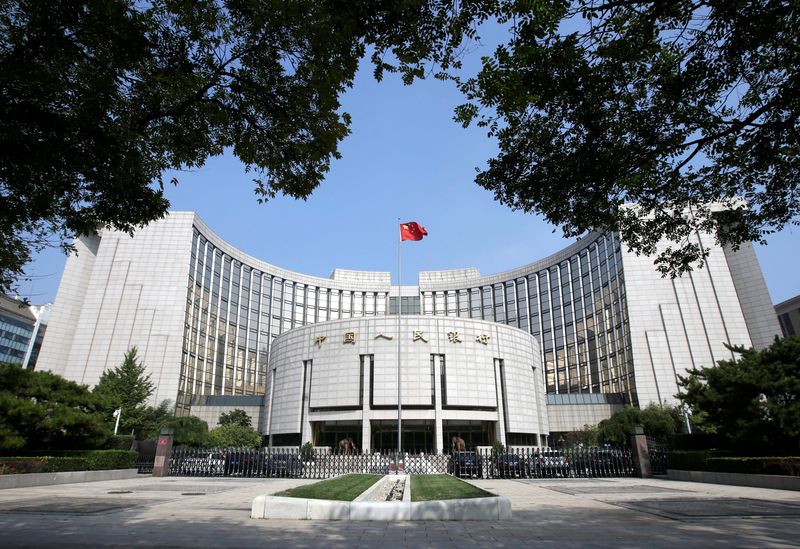China's rate cuts fail to revive iron ore and copper: Russell
By Clyde Russell
LAUNCESTON, Australia (Reuters) -China's first cut to major short- and long-term interest rates in 11 months drew a distinctly ho-hum reaction from the commodities that usually would be expected to be the biggest beneficiaries.
The People's Bank of China said on Monday it would cut the seven-day reverse repo rate to 1.7% from 1.8%, and minutes after that announcement benchmark lending rates were lowered by the same margin at the monthly fixing.
But the first broad reduction in interest rates since last August sparked little buying interest in iron ore and copper, the two commodities viewed as having the biggest exposure to the major parts of China's economy, namely construction and manufacturing.
Benchmark iron ore futures on the Singapore Exchange (OTC:SPXCY ) dipped 0.4% to end at $106.79 a metric ton, while China's main domestic contract on the Dalian Commodity Exchange ended daytime trade 0.3% lower at 798.5 yuan ($109.79) a ton.
London-traded copper futures closed down 1.0% at $9,216.50 a ton, the weakest finish since April 8, while Shanghai copper contracts ended at 76,220 yuan, down 0.86% and also the lowest close since April 8.
The lacklustre price response to the interest rate cuts follows the prevailing view that China's policymakers aren't really pulling out all the stops to boost the world's second-biggest economy.
The twice a decade political event known as the plenum, held last week failed to inspire confidence that Beijing is on track to lift flagging economic growth by sparking a recovery in the residential property sector.
The risk that Donald Trump wins the U.S. presidential election in November and delivers on his promise to increase trade tariffs on China and others is also leading market watchers to be cautious about China's economic prospects.
However, the worries over China are largely limited to sentiment where commodities are concerned, with both iron ore and copper showing trade patterns more related to pricing dynamics.
STRONG IRON ORE IMPORTS
China's iron ore imports are expected to remain robust in July, with commodity analysts Kpler tracking arrivals of around 111 million tons.
If the customs number comes in close to the Kpler estimate, it would represent a strong gain on the official 97.61 million tons reported in June.
China's iron ore imports have been fairly strong so far this year, with customs data showing arrivals of 611.18 million tons in the first half, up 35.05 million, or 6.2% from the same period in 2023.
But much of the increase has ended up going toward rebuilding stockpiles, with port inventories monitored by consultants SteelHome rising 35.1 million tons since the end of last year to 149.6 million in the week to July 24.
Steel mills and traders have been taking advantage of the declining trend in iron ore prices so far this year to boost inventory levels, which had dropped to a seven-year low in October of last year.
Copper imports and exports also appear to be responding to market dynamics, with China's arrivals of unwrought metal dropping sharply in June to 436,000 tons, a 15.6% slide from May's 514,000.
This was in response to copper prices rising sharply, with London contracts reaching a record high of $11,104.50 a ton on May 20.
The higher prices effectively closed the arbitrage window for China's traders, and instead of buying copper to add to inventories as they did earlier this year, they have started selling into the global market.
China's exports of refined copper surged to a record high of 157,751 tons in June, more than double May's level and 55% higher than the previous high from 12 years ago.
Copper stockpiles monitored by the Shanghai Futures Exchange have started easing from four-year highs, dropping to 309,182 tons in the week to July 19, having declined from the 51-month high of 339,964 in the week to June 7.
The overall message from China's iron ore and copper markets is that traders are more responsive to global pricing and market dynamics than policy moves.
While lower interest rates and other stimulus measures may eventually translate into higher physical demand, for now China's demand for iron ore and copper is better explained by price moves.
The opinions expressed here are those of the author, a columnist for Reuters.
Source: Investing.com
